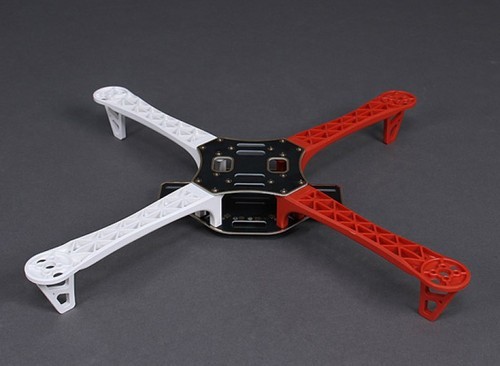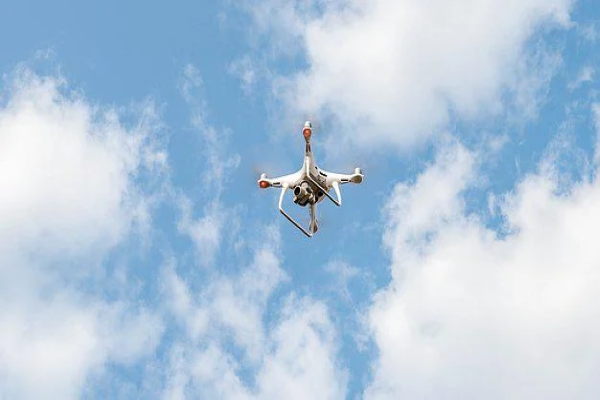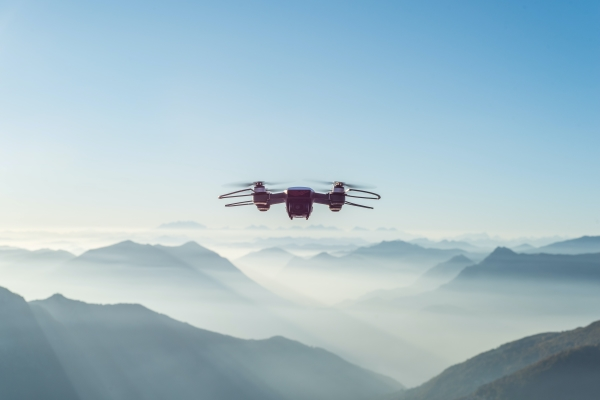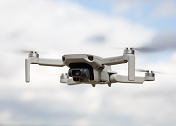How to Choose A Quadcopter Frame
So you've decided you want to build a quadcopter. Congrats! Now it's time to start thinking about which quadcopter frame you want to use. In this article, we'll go over some of the different factors you should consider when choosing a quadcopter frame.
- Part 1:What is A Quadcopter Frame
- Part 2:Frame Size
- Part 3:Frame Shape / Arm Layout
- Part 4:Unibody Design
- Part 5:Carbon Fibre Thickness
- Part 6:Filing Carbon Fibre Edges
- Part 7:Racing vs Freestyle
- Part 8:Battery Location
- Part 9:Conclusion
Part 1:What is A Quadcopter Frame
A quadcopter frame is the central structure of a quadcopter. It houses the motors and other components, and provides a platform to which the propellers are attached. The frame also determines the size and shape of the quadcopter. Frames can be made from a variety of materials, including carbon fiber, aluminum, and plastic.
When choosing a quadcopter frame, it is important to consider the purpose for which the quadcopter will be used. For example, racing quadcopters generally have smaller frames than those used for photography or videography. The weight of the frame is also an important consideration; lighter frames are more maneuverable but may be less durable than heavier frames.

Part 2:Frame Size
When choosing a quadcopter frame, size is an important consideration. The size of the frame will determine the size of the quadcopter as a whole, and this in turn affects factors like flight time and payload capacity. Generally speaking, larger quadcopters are more stable and can carry more weight, but they are also more expensive and may be more difficult to transport. Smaller quadcopters are cheaper and more portable, but they may not be able to fly for as long or carry as much weight. Ultimately, the best frame size for you will depend on your budget and what you plan to use your quadcopter for.
Part 3: Frame Shape / Arm Layout
There are two primary types of quadcopter frames: X and +. The X frame is the most common type of frame, and features four arms that extend out from the center of the body. The + frame also has four arms, but they are arranged in a cross pattern. Both types of frames have their own benefits and drawbacks, so it's important to choose the one that's right for you.
The main advantage of the X frame is that it's more aerodynamic than the + frame. This means that it's faster and more responsive to pilot input. However, the X frame is also more susceptible to wind gusts and turbulence. The + frame is not as aerodynamic as the X frame, but it's more stable in rough conditions. If you're planning on flying in windy or turbulent conditions, the + frame is a better choice.
Another factor to consider is arm layout. Some frames have symmetrical arm layouts, while others have asymmetrical layouts. Symmetrical arm layouts are evenly balanced, which makes them morestable in flight. Asymmetrical arm layouts can provide more power and agility, but they're less stable than symmetrical layouts.
Part 4:Unibody Design
Most modern quadcopters use a unibody frame design. This means that the main body of the quadcopter is one solid piece, with the motors and other components attached to it. Unibody frames are typically made from carbon fiber or other lightweight materials.
There are several advantages to using a unibody frame. First, it makes the quadcopter more rigid, which can improve flight performance. Second, it protects the internal components of the quadcopter from damage in case of a crash. And finally, it can be easier to install and replace components on a unibody frame than on a traditional framed quadcopter.
If you're looking for a high-performance quadcopter frame, then a unibody design is probably your best bet. But if you're just starting out, you may want to go with a traditional framed design, which can be easier to work with and less expensive.
Part 5:Carbon Fibre Thickness
When it comes to choosing a carbon fibre frame for your quadcopter, thickness is an important consideration. The thicker the frame, the more rigid and durable it will be. However, this also means that the frame will be heavier, which can impact flight performance.
As a general rule of thumb, thicker frames are better suited for racing and stunt flying, while thinner frames are better for general purpose flying. If you're not sure what thickness to go for, err on the side of caution and choose a thicker frame.
Part 6:Filing Carbon Fibre Edges
Whether you're looking to build a new quadcopter or upgrade an existing one, choosing the right frame is an important decision. There are many different factors to consider, such as size, weight, durability, and aesthetics. But one of the most important considerations is the material your frame is made from.
There are two main types of materials used for quadcopter frames: aluminum and carbon fiber. Aluminum is the most common choice for budget-conscious builders. It's strong and lightweight, making it a good choice for smaller quadcopters. Carbon fiber is more expensive, but it's also much lighter and stronger than aluminum. That makes it a good choice for larger quadcopters, or those that will be carrying heavier payloads.
If you're looking for the lightest possible frame, carbon fiber is the way to go. But it's also important to consider the strength of your frame. After all, a lightweight frame won't do you much good if it breaks easily. That's why it's important to choose a carbon fiber frame with Reinforced Edges™ technology. This innovative technology strengthens the edges of the frame, making it more resistant to breaking or shattering in a crash.
Part 7:Racing vs Freestyle
There are two main types of quadcopter frames: racing and freestyle. Both have their own advantages and disadvantages, so it's important to know which one is right for you before making a purchase.
Racing frames are designed for speed and agility. They're usually lighter and more aerodynamic than freestyle frames, which makes them faster and easier to maneuver. However, they're also more fragile and can be damaged more easily in a crash.
Freestyle frames are designed for durability and stability. They're usually heavier and less aerodynamic than racing frames, which makes them slower and harder to maneuver. However, they're also more resistant to crashes and can take more punishment.
So, which one is right for you? It depends on what you want to use your quadcopter for. If you're interested in racing, then a racing frame is probably the way to go. If you're interested in freestyle flying or simply want a quadcopter that's more durable, then a freestyle frame is probably the better choice.
Part 8:Battery Location
When choosing a quadcopter frame, one of the most important factors to consider is where the battery will be located. The battery is the heaviest component on the quadcopter, and its position has a big impact on the flight characteristics of the vehicle.
There are three main types of battery locations: top-mounted, bottom-mounted, and side-mounted. Each has its own advantages and disadvantages that you should take into account before making your final decision.
Top-mounted batteries are the most popular choice for racing quadcopters because they keep the center of gravity low and improve handling. However, they can be more difficult to install and remove, and they are more exposed to the elements (which can shorten their lifespan).
Bottom-mounted batteries have the advantage of being easier to install and remove, but they tend to make the quadcopter less stable in flight. This can be mitigated by careful placement of other components, but it is something to keep in mind.
Side-mounted batteries offer a good compromise between top- and bottom-mounted options. They are easier to install than top-mounted batteries, but don't adversely affect flight stability as much as bottom-mounted ones.
Part 9:Conclusion
If you're looking to buy a quadcopter frame, there are a few things you should keep in mind. First, you need to decide what size quadcopter you want. The most common sizes are 250, 450, and 650. Second, you need to decide what material you want your frame to be made out of. The most common materials are carbon fiber and aluminum. Third, you need to decide how much money you're willing to spend on your quadcopter frame. The prices can range from $20 to $20
Now that you know the different types of quadcopter frames, it's time to choose the right one for you. Consider your budget, flying style, and desired features to find the perfect frame. With so many options on the market, you're sure to find a quadcopter frame that meets your needs.
0. And finally, you need to decide what style of quadcopter frame you want. The most common styles are X, +, and H.
You may like

10 DJI Osmo Action Accessories - DJI Recommended
Get the perfect photography accessories for your Drone! In this article, we list the 10 DJI Osmo Action accessories that we recommend.

DJI Phantom 4 Pro Battery Complete Guide
DJI Phantom 4 Pro is very popular. If you want to know about the DJI Phantom 4 Pro battery, you can continue to read the article.

Motor for Drone
A drone cannot fly without a motor for drone. This article will take you to understand the role of drone motors.



